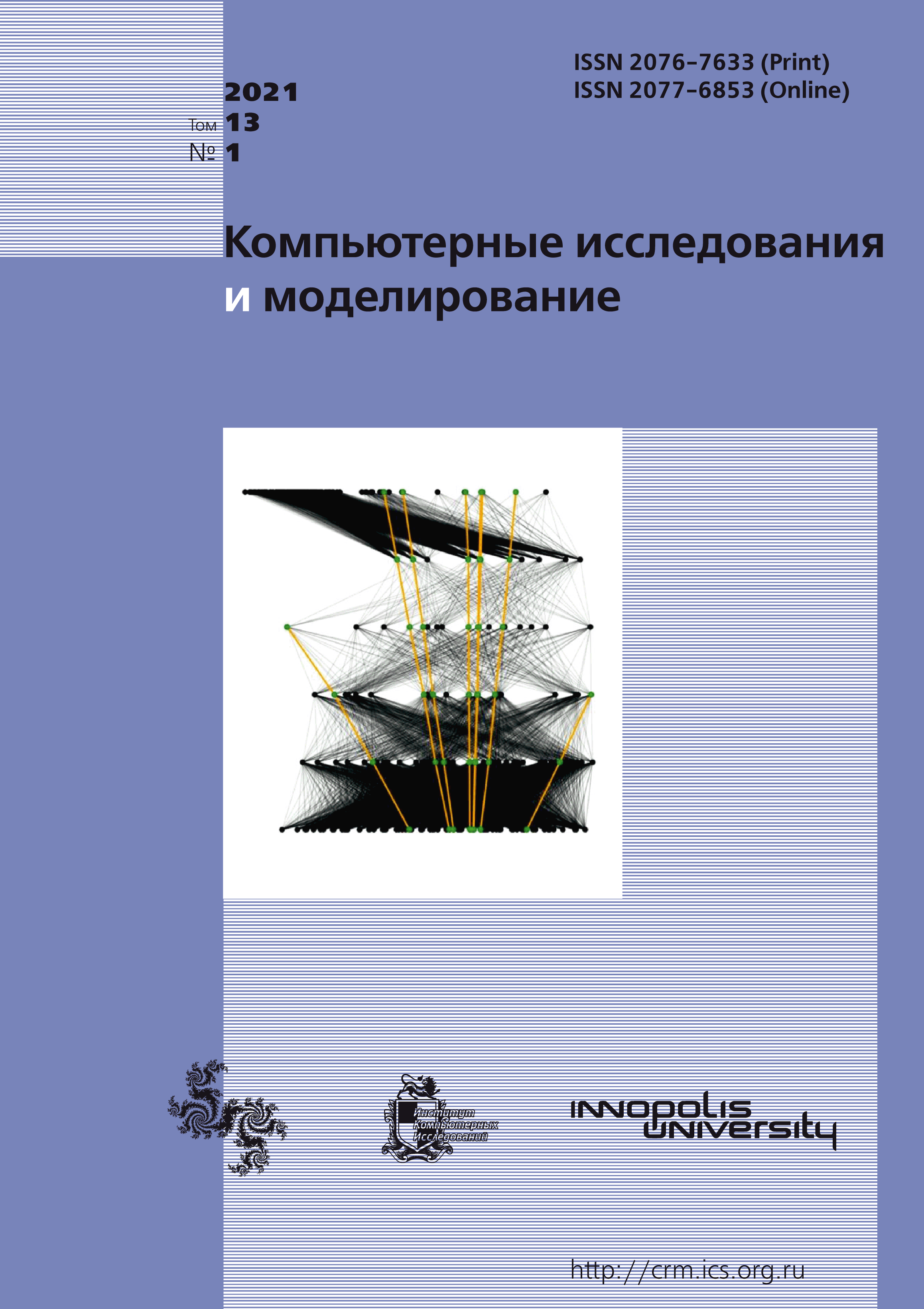All issues
- 2025 Vol. 17
- 2024 Vol. 16
- 2023 Vol. 15
- 2022 Vol. 14
- 2021 Vol. 13
- 2020 Vol. 12
- 2019 Vol. 11
- 2018 Vol. 10
- 2017 Vol. 9
- 2016 Vol. 8
- 2015 Vol. 7
- 2014 Vol. 6
- 2013 Vol. 5
- 2012 Vol. 4
- 2011 Vol. 3
- 2010 Vol. 2
- 2009 Vol. 1
Algorithm of simple graph exploration by a collective of agents
 pdf (330K)
pdf (330K)
The study presented in the paper is devoted to the problem of finite graph exploration using a collective of agents. Finite non-oriented graphs without loops and multiple edges are considered in this paper. The collective of agents consists of two agents-researchers, who have a finite memory independent of the number of nodes of the graph studied by them and use two colors each (three colors are used in the aggregate) and one agentexperimental, who has a finite, unlimitedly growing internal memory. Agents-researches can simultaneously traverse the graph, read and change labels of graph elements, and also transmit the necessary information to a third agent — the agent-experimenter. An agent-experimenter is a non-moving agent in whose memory the result of the functioning of agents-researchers at each step is recorded and, also, a representation of the investigated graph (initially unknown to agents) is gradually built up with a list of edges and a list of nodes.
The work includes detail describes of the operating modes of agents-researchers with an indication of the priority of their activation. The commands exchanged between agents-researchers and an agent-experimenter during the execution of procedures are considered. Problematic situations arising in the work of agentsresearchers are also studied in detail, for example, staining a white vertex, when two agents simultaneously fall into the same node, or marking and examining the isthmus (edges connecting subgraphs examined by different agents-researchers), etc. The full algorithm of the agent-experimenter is presented with a detailed description of the processing of messages received from agents-researchers, on the basis of which a representation of the studied graph is built. In addition, a complete analysis of the time, space, and communication complexities of the constructed algorithm was performed.
The presented graph exploration algorithm has a quadratic (with respect to the number of nodes of the studied graph) time complexity, quadratic space complexity, and quadratic communication complexity. The graph exploration algorithm is based on the depth-first traversal method.
Copyright © 2021 Stepkin A.V., Stepkina A.S.
Indexed in Scopus
Full-text version of the journal is also available on the web site of the scientific electronic library eLIBRARY.RU
The journal is included in the Russian Science Citation Index
The journal is included in the RSCI
International Interdisciplinary Conference "Mathematics. Computing. Education"






